Carrot Container Gardening DIY: Imagine plucking vibrant, sweet carrots straight from your patio, balcony, or even your kitchen windowsill! Sounds like a dream, right? Well, it doesn’t have to be! For centuries, humans have cultivated carrots, tracing their origins back to Afghanistan. These root vegetables weren’t always the vibrant orange we know and love; they came in shades of purple, white, and yellow! But regardless of color, the desire to grow our own food has always been a part of our human story.
And that’s where this DIY guide comes in. Maybe you lack a sprawling backyard, or perhaps you’re simply looking for a fun and rewarding gardening project. Whatever your reason, carrot container gardening DIY is the perfect solution. I’m going to show you how to bypass the limitations of traditional gardens and create a thriving carrot patch in a pot.
In today’s world, knowing where our food comes from is more important than ever. Plus, there’s nothing quite like the taste of a freshly harvested, homegrown carrot. This guide will equip you with all the knowledge you need to successfully grow delicious carrots in containers, from choosing the right pot and soil to understanding watering and sunlight requirements. Get ready to experience the joy of homegrown goodness – let’s get planting!
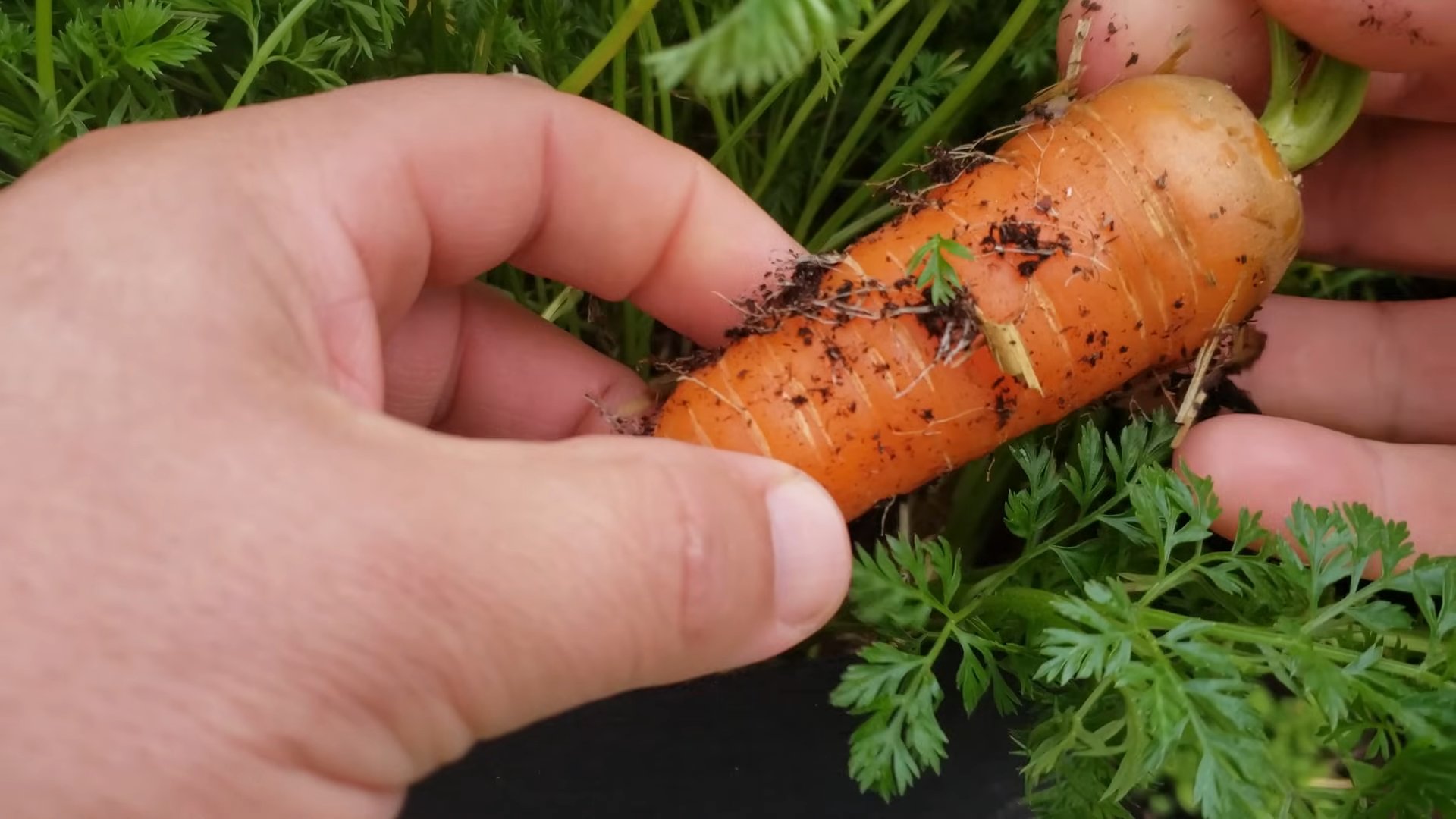
Grow Your Own Carrots in Containers: A Beginner’s Guide
Hey there, fellow gardening enthusiasts! Ever dreamed of harvesting your own sweet, crunchy carrots but lack the space for a traditional garden? Well, I’m here to tell you that container gardening is your answer! Growing carrots in containers is surprisingly easy and rewarding. I’ve been doing it for a few years now, and I’m excited to share my tips and tricks with you. Let’s get started!
Choosing the Right Container and Soil
Before we even think about seeds, we need to set the stage for success. This means picking the perfect container and filling it with the right kind of soil. Trust me, this is crucial!
* Container Size: Carrots need room to grow downwards. Opt for a container that’s at least 12 inches deep, but 18-24 inches is even better. The wider the container, the more carrots you can grow! I personally love using large plastic tubs or even repurposed buckets.
* Drainage: This is non-negotiable! Make sure your container has plenty of drainage holes. Carrots hate soggy feet. If your container doesn’t have enough holes, drill some more.
* Soil: Forget about using garden soil straight from the ground. It’s usually too heavy and compacts easily, which will result in stunted, misshapen carrots. Instead, use a well-draining potting mix specifically formulated for containers. I like to mix in some compost for added nutrients and moisture retention. A good mix is roughly 60% potting mix, 30% compost, and 10% perlite or vermiculite for extra drainage.
Selecting Your Carrot Seeds
Now for the fun part – choosing your carrot varieties! There are so many options, from classic orange carrots to colorful purple and yellow ones.
* Variety Selection: Consider the size and shape of your container when choosing your carrot variety. Shorter, rounder varieties like ‘Thumbelina’ or ‘Parisian’ are ideal for shallower containers. For deeper containers, you can grow longer varieties like ‘Nantes’ or ‘Danvers’. I personally love ‘Rainbow’ carrots for their vibrant colors and delicious flavor.
* Seed Quality: Always buy your seeds from a reputable source to ensure good germination rates. Check the expiration date on the seed packet. Older seeds may not germinate as well.
* Organic vs. Non-Organic: This is a personal preference. Organic seeds are grown without synthetic pesticides and fertilizers.
Planting Your Carrot Seeds
Okay, we’ve got our container, soil, and seeds. Time to get our hands dirty!
1. Prepare the Soil: Fill your container with the potting mix, leaving about an inch or two of space at the top. Gently pat down the soil to remove any air pockets.
2. Sow the Seeds: Carrot seeds are tiny, so it’s easy to sow them too thickly. Sprinkle the seeds thinly over the surface of the soil. Aim for about 1/2 inch spacing between seeds.
3. Cover the Seeds: Lightly cover the seeds with a thin layer of soil (about 1/4 inch).
4. Water Gently: Use a watering can with a gentle rose attachment or a spray bottle to water the soil thoroughly. Be careful not to wash away the seeds.
5. Label Your Container: Don’t forget to label your container with the carrot variety and the date you planted them. This will help you keep track of your progress.
Caring for Your Carrot Plants
Once your seeds are planted, it’s time to nurture them into healthy, thriving carrot plants.
* Watering: Carrots need consistent moisture to grow properly. Water deeply whenever the top inch of soil feels dry to the touch. Avoid overwatering, which can lead to root rot. I usually water my carrots every 2-3 days, depending on the weather.
* Thinning: This is a crucial step that many beginners overlook. When your seedlings are about 2 inches tall, thin them out so that they are about 1-2 inches apart. This will give them enough space to develop properly. Use small scissors to snip off the unwanted seedlings at the soil line. Don’t try to pull them out, as this can disturb the roots of the remaining plants.
* Fertilizing: Carrots are not heavy feeders, but they will benefit from a light feeding every few weeks. Use a balanced liquid fertilizer diluted to half strength. I like to use fish emulsion or seaweed extract.
* Sunlight: Carrots need at least 6 hours of sunlight per day. Place your container in a sunny location.
* Weed Control: Keep your container free of weeds, which can compete with your carrots for nutrients and water. Hand-pull any weeds that appear.
* Pest Control: Carrots are generally pest-resistant, but they can sometimes be attacked by aphids or carrot rust flies. Inspect your plants regularly for signs of pests. If you find any, you can try spraying them with insecticidal soap or neem oil.
Harvesting Your Carrots
The moment we’ve all been waiting for – harvest time!
1. Check for Maturity: Carrots are typically ready to harvest 60-80 days after planting, depending on the variety. Check the seed packet for specific maturity dates. You can also gently brush away some of the soil around the top of the carrot to check its size.
2. Loosen the Soil: Before pulling your carrots, water the soil thoroughly to loosen it.
3. Gently Pull: Grasp the carrot greens near the base and gently pull upwards. If the carrot is resistant, use a garden fork to loosen the soil around it.
4. Wash and Enjoy: Wash your freshly harvested carrots and enjoy them raw, roasted, or in your favorite recipes!
Troubleshooting Common Problems
Even with the best care, you might encounter some challenges along the way. Here are a few common problems and how to fix them:
* Stunted Growth: This could be due to poor soil, lack of sunlight, or overcrowding. Make sure your carrots have enough space, sunlight, and nutrients.
* Forked or Misshapen Carrots: This is often caused by rocks or compacted soil. Remove any rocks from your container and use a well-draining potting mix.
* Bitter Taste: This can be caused by inconsistent watering or hot weather. Water your carrots regularly and provide some shade during the hottest part of the day.
* Pests: As mentioned earlier, aphids and carrot rust flies can sometimes be a problem. Use insecticidal soap or neem oil to control them.
Extra Tips for Success
Here are a few extra tips that I’ve learned over the years:
* Succession Planting: Plant a new batch of carrot seeds every few weeks to ensure a continuous harvest throughout the growing season.
* Companion Planting: Plant carrots alongside other vegetables like onions, garlic, or rosemary. These plants can help deter pests and improve the flavor of your carrots.
* Mulching: Add a layer of mulch around your carrot plants to help retain moisture and suppress weeds.
* Rotate Your Crops: If you’re growing carrots in the same container year after year, rotate your crops to prevent soilborne diseases.
Growing carrots in containers is a fun and rewarding experience. With a little bit of planning and care, you can enjoy a bountiful harvest of delicious, homegrown carrots. So, grab your seeds, get your hands dirty, and start growing! Happy gardening!
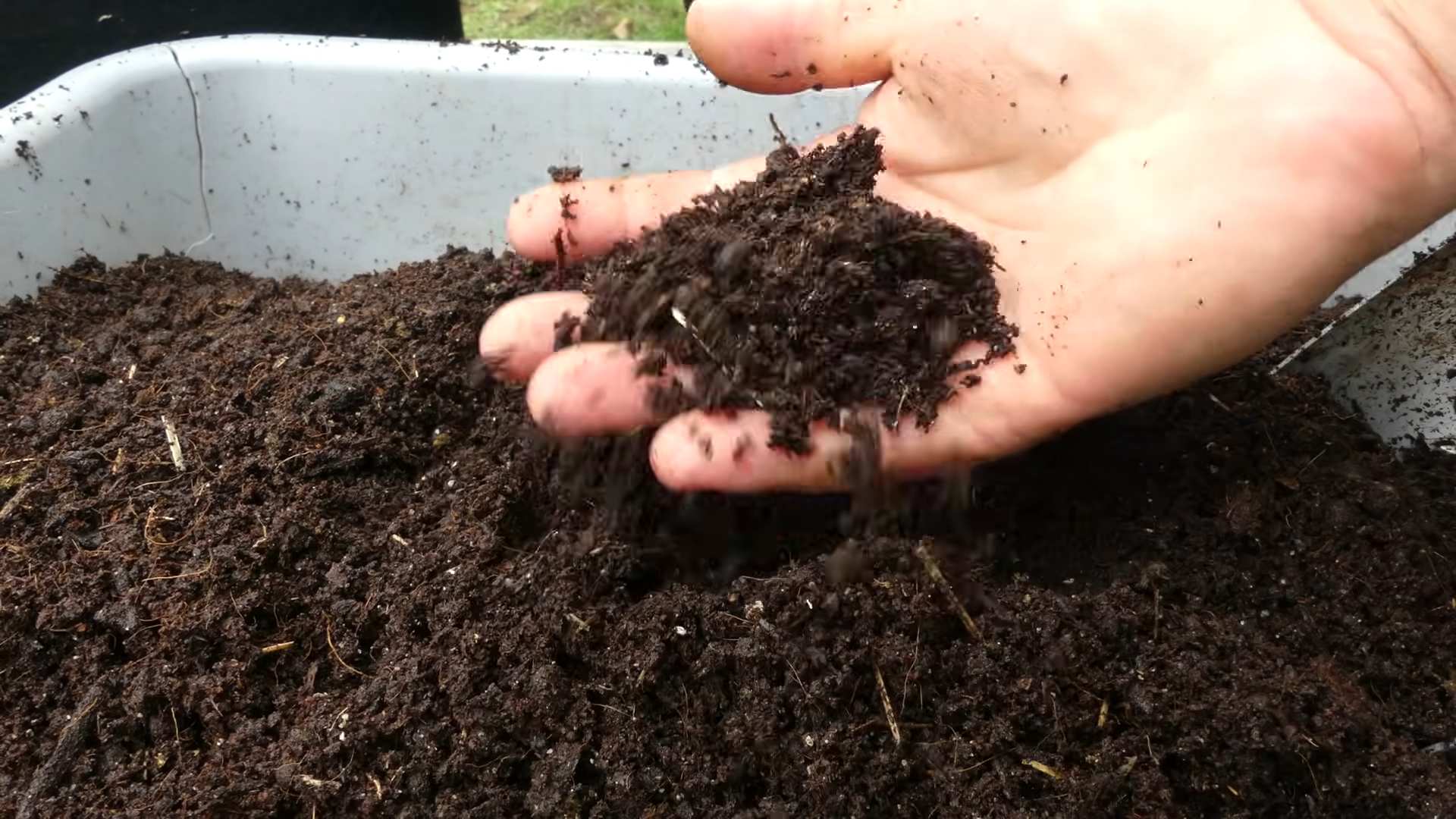
Conclusion
So, there you have it! Transforming a simple container into a thriving carrot patch is not only incredibly rewarding but also surprisingly easy. We’ve walked you through the steps, highlighting the key considerations for success, from choosing the right container size and soil mix to ensuring adequate drainage and sunlight. But why is this DIY carrot container gardening trick a must-try?
Firstly, it democratizes gardening. No sprawling backyard is required! Whether you live in an apartment with a sunny balcony, a townhouse with a small patio, or even just have a well-lit windowsill, you can experience the joy of growing your own fresh, crisp carrots. This accessibility makes it a fantastic project for beginners and seasoned gardeners alike.
Secondly, it offers unparalleled control over your growing environment. You dictate the soil composition, ensuring it’s free from rocks and debris that can hinder carrot development. You manage the watering schedule, preventing overwatering or underwatering, both of which can lead to stunted growth or disease. And you can easily move your container to chase the sun or protect it from harsh weather conditions.
Thirdly, the taste! There’s simply no comparison between store-bought carrots and those you’ve nurtured yourself. The sweetness and vibrancy of freshly harvested carrots are unmatched. Plus, you have the satisfaction of knowing exactly where your food came from and that it’s free from harmful pesticides.
But the fun doesn’t stop there! Feel free to experiment with different carrot varieties. Nantes carrots are a classic choice, but consider trying Chantenay carrots for shorter, sturdier roots, or even colorful varieties like purple or yellow carrots for a visually stunning harvest. You can also companion plant with herbs like rosemary or sage to deter pests and enhance the flavor of your carrots.
Another variation to consider is succession planting. By planting seeds every few weeks, you can ensure a continuous harvest throughout the growing season. This is particularly useful if you have a small container and want to maximize your yield.
Don’t be afraid to get your hands dirty and embrace the learning process. Gardening is all about experimentation and adapting to your specific environment. If you encounter challenges, don’t give up! There are countless resources available online and in your local community to help you troubleshoot and succeed.
We are confident that you’ll find this DIY carrot container gardening project to be both enjoyable and rewarding. Imagine the satisfaction of pulling your own homegrown carrots from the soil, ready to be enjoyed in salads, soups, or simply as a healthy snack.
So, what are you waiting for? Gather your supplies, follow our guide, and embark on your carrot-growing adventure today! And most importantly, we encourage you to share your experiences with us. Post photos of your container gardens, share your tips and tricks, and let us know how your carrots are growing. We can’t wait to see your success! Let’s cultivate a community of thriving container gardeners, one carrot at a time.
Frequently Asked Questions (FAQ)
What size container is best for growing carrots?
The ideal container size depends on the carrot variety you choose. Generally, a container that is at least 12 inches deep and 8 inches wide is suitable for most carrot types. However, longer varieties like Nantes carrots may require a deeper container, around 18 inches. For shorter, rounder varieties like Parisian carrots, a shallower container of 6-8 inches may suffice. Ensure the container has adequate drainage holes to prevent waterlogging. Remember, the more space the roots have, the better the carrots will grow. Crowding can lead to smaller, misshapen carrots.
What type of soil should I use for container carrot gardening?
Carrots need loose, well-draining soil to develop properly. Avoid heavy clay soils, as they can hinder root growth and result in deformed carrots. A good option is a soilless potting mix specifically formulated for vegetables. You can also create your own mix by combining equal parts of peat moss, perlite, and vermiculite. Adding compost to the mix will provide essential nutrients and improve drainage. The soil should be free of rocks and debris, as these can also interfere with carrot growth.
How often should I water my container carrots?
Watering frequency depends on the weather conditions and the type of container you’re using. Generally, you should water your carrots when the top inch of soil feels dry to the touch. Water deeply and thoroughly, ensuring that the water drains out of the drainage holes. Avoid overwatering, as this can lead to root rot. During hot, dry weather, you may need to water more frequently. Mulching around the base of the plants can help retain moisture and reduce the need for frequent watering.
How much sunlight do carrots need?
Carrots need at least 6 hours of direct sunlight per day to thrive. Choose a location that receives plenty of sunlight throughout the day. If you’re growing carrots indoors, you may need to supplement with artificial lighting, such as grow lights. Rotate the container regularly to ensure that all sides of the plants receive adequate sunlight. Insufficient sunlight can result in leggy growth and smaller carrots.
When should I harvest my carrots?
Harvest time depends on the carrot variety and the growing conditions. Generally, carrots are ready to harvest when they reach the size specified on the seed packet. You can gently loosen the soil around the carrots and pull them out by the tops. If the soil is dry, water it thoroughly before harvesting to make it easier to pull the carrots. You can also harvest carrots at different stages of maturity, depending on your preference. Baby carrots can be harvested earlier, while larger carrots can be left in the ground for longer.
What are some common pests and diseases that affect carrots?
Common pests that affect carrots include carrot rust flies, aphids, and nematodes. Carrot rust flies lay their eggs near the base of the plants, and the larvae burrow into the roots, causing damage. Aphids suck the sap from the leaves, weakening the plants. Nematodes are microscopic worms that live in the soil and feed on the roots. To prevent pest problems, practice good garden hygiene, such as removing weeds and debris. You can also use organic pest control methods, such as insecticidal soap or neem oil. Common diseases that affect carrots include leaf blight and root rot. Leaf blight causes brown spots on the leaves, while root rot causes the roots to decay. To prevent disease problems, ensure good drainage and avoid overwatering. You can also use fungicides to control fungal diseases.
Can I grow carrots in the same container year after year?
While it’s possible to reuse containers, it’s generally recommended to refresh the soil each year. This helps to replenish nutrients and prevent the buildup of pests and diseases. Before reusing a container, clean it thoroughly with soap and water to remove any lingering pathogens. You can also sterilize the container with a bleach solution. When refilling the container, use fresh potting mix and add compost to provide essential nutrients. Crop rotation is also a good practice to prevent soil depletion and pest problems.
What are some good companion plants for carrots?
Companion planting can help to improve the growth and health of your carrots. Some good companion plants for carrots include onions, garlic, rosemary, sage, and marigolds. Onions and garlic deter carrot rust flies, while rosemary and sage repel other pests. Marigolds attract beneficial insects that prey on pests. Avoid planting carrots near fennel, as it can inhibit their growth.
My carrots are growing, but they are very small. What could be the problem?
Several factors can contribute to small carrots. Insufficient sunlight, poor soil, overcrowding, and inadequate watering are common culprits. Ensure your carrots are receiving at least 6 hours of direct sunlight per day. Use a loose, well-draining soil mix that is rich in organic matter. Thin out the seedlings to provide adequate spacing between plants. Water regularly, keeping the soil consistently moist but not waterlogged. Fertilize with a balanced fertilizer to provide essential nutrients. Addressing these issues should help to improve the size and quality of your carrots.
Can I grow carrots indoors year-round?
Yes, you can grow carrots indoors year-round, provided you have the right conditions. You’ll need a sunny windowsill or grow lights to provide adequate light. Choose a container that is at least 12 inches deep and 8 inches wide. Use a well-draining potting mix and water regularly. Fertilize with a balanced fertilizer to provide essential nutrients. With proper care, you can enjoy fresh, homegrown carrots even during the winter months.

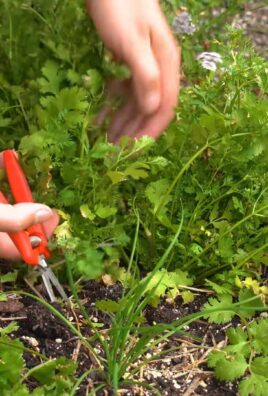
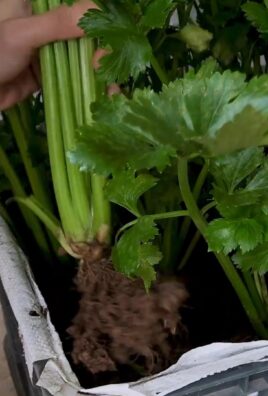
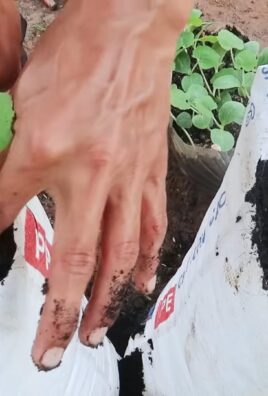
Leave a Comment